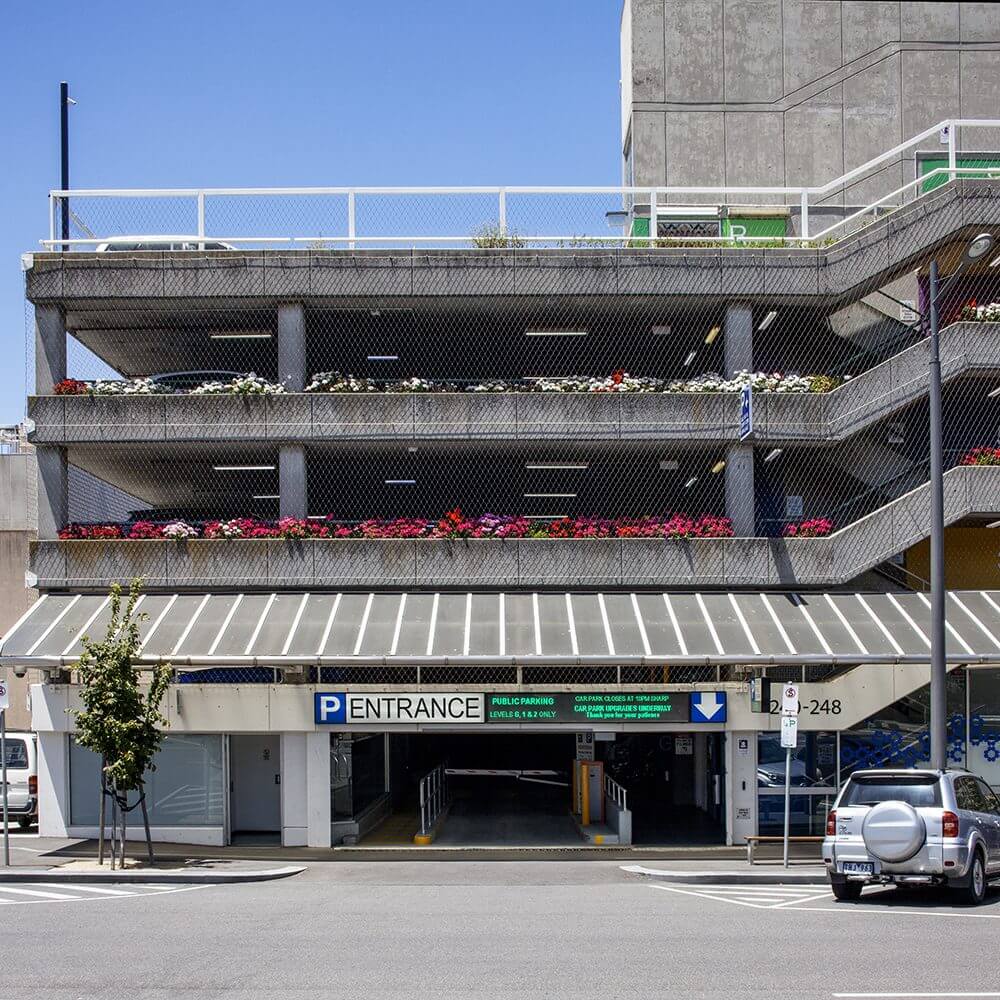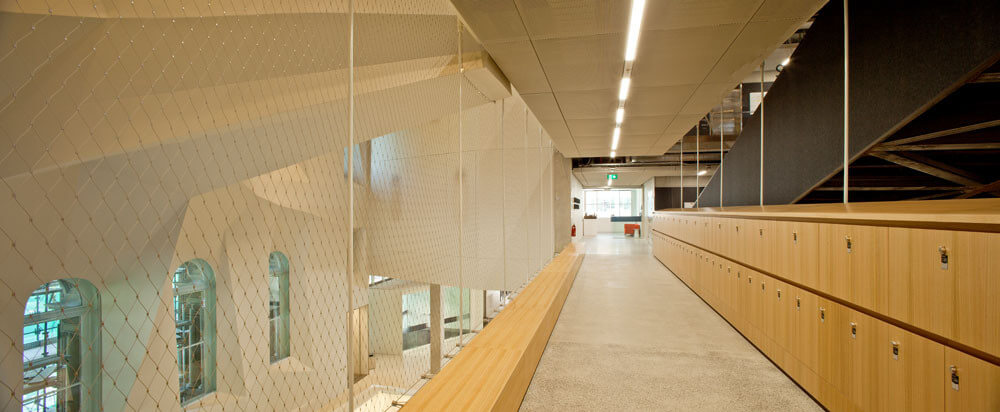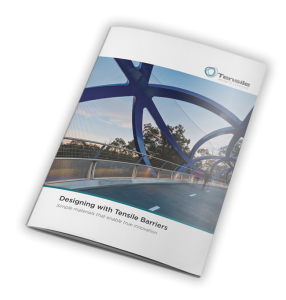One of the stand-out maintenance benefits of Webnet mesh for stainless steel safety barriers is that it doesn’t need a lot of upkeep! This means lower ongoing maintenance costs.
Webnet is made from marine-grade stainless steel, which gives it inbuilt anti-corrosion resistance. When combined with precision engineering and tensioning, this helps ensure a safety barrier that is low-maintenance and long-lasting.
But as for any built project, some maintenance will always be required. It’s important to give any installation an annual inspection to check for issues that could become problematic over time.
Webnet maintenance requirements
Tensile installations such as barriers and facades involve the integration of two different building systems. These are solid construction, which is held together by compression, and tensile structures, which are kept stable through tensioning.
Tensile structures behave very differently from solid construction, in that they are subject to transient loads like wind and movement, as well as dead loads – that is the weight of all the structural elements. This makes it crucial to get the combination of engineering and tensioning absolutely spot on in every project.
Following an installation there is a ‘settling in’ period once the tensioned elements have been taken up to their working load. This typically occurs within the first 24-48 hours. Prior to handover on our projects, we account for settling in as part of our Internal Testing Procedures (ITP) protocol.
We also give clients an operations and maintenance manual that outlines the installation’s maintenance requirements and frequency. This is designed for the individual installation and differs from one project to the next.

Typical Webnet inspections
Here are some of the issues we typically check for in regular inspections of Webnet installations:
- Damage or corrosion to load-bearing structures.
- Material damage or problems – such as kinks, breaks, or fraying in wire ropes, or lose parts and components.
- Loss of tension, which can occur due to a large load being applied to the mesh or cable, such as a crowd load impact.
- The effect of building movement over time. Typically, problems in this area only occur when there has been a great deal of movement over a long period of time.
- Cleaning requirements – e.g., from accumulated dirt, dust or grime.
If any need for repair is identified at an inspection, we will promptly attend to it. However, more often than not, we find that repairs are not required.
An example of the low maintenance requirements and longevity of Webnet is the Melbourne School of Design project. It features a five-level atrium barrier made from 1,200 sqm of Webnet along with 4kms of support cables and 1,500m of stainless-steel tubing. In the decade after it was installed, the barrier had almost no maintenance needs, and the one issue that did need attention was solved within minutes!
Speak to us about the maintenance benefits of Webnet
Installing robust low-maintenance stainless steel barriers and facades is our speciality at Tensile. Contact us to find out more about Webnet’s many benefits or discuss your project!






































